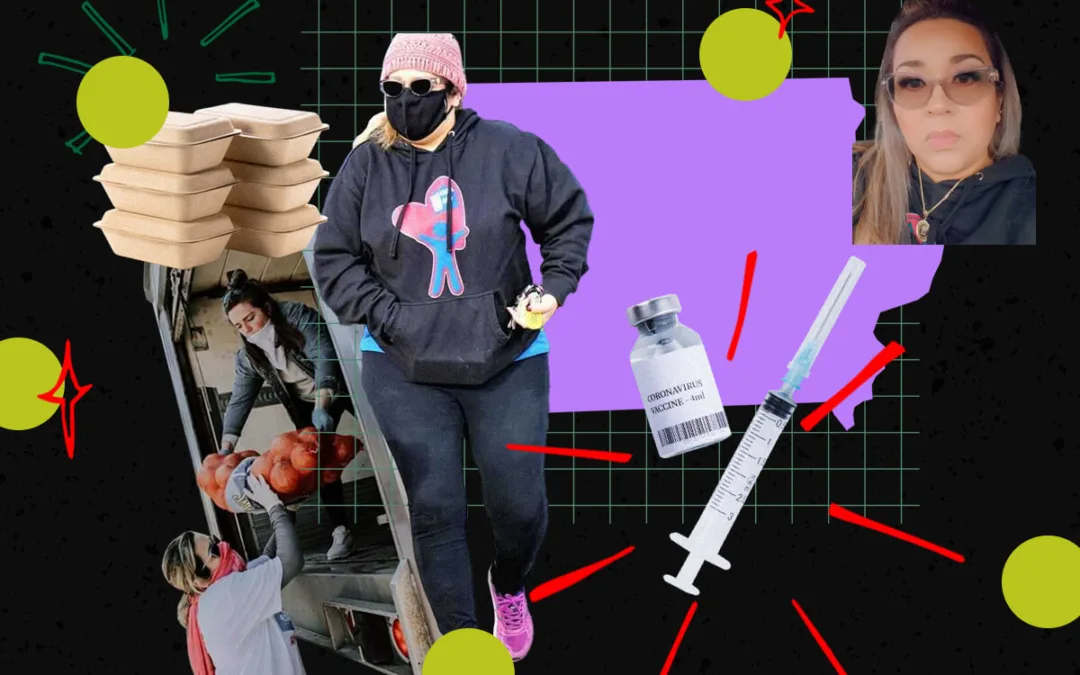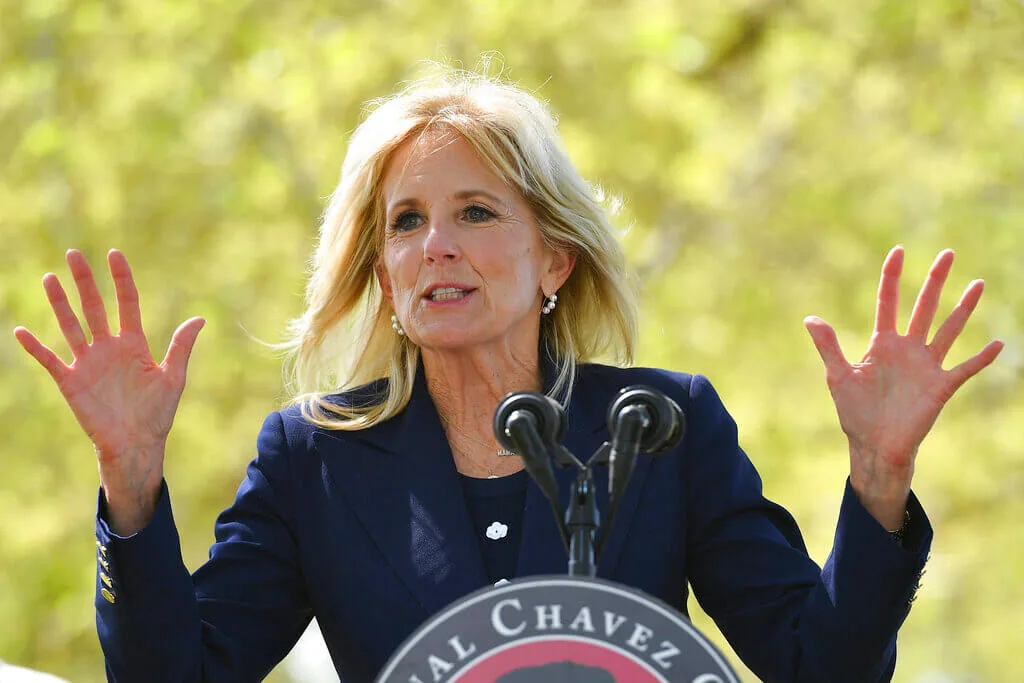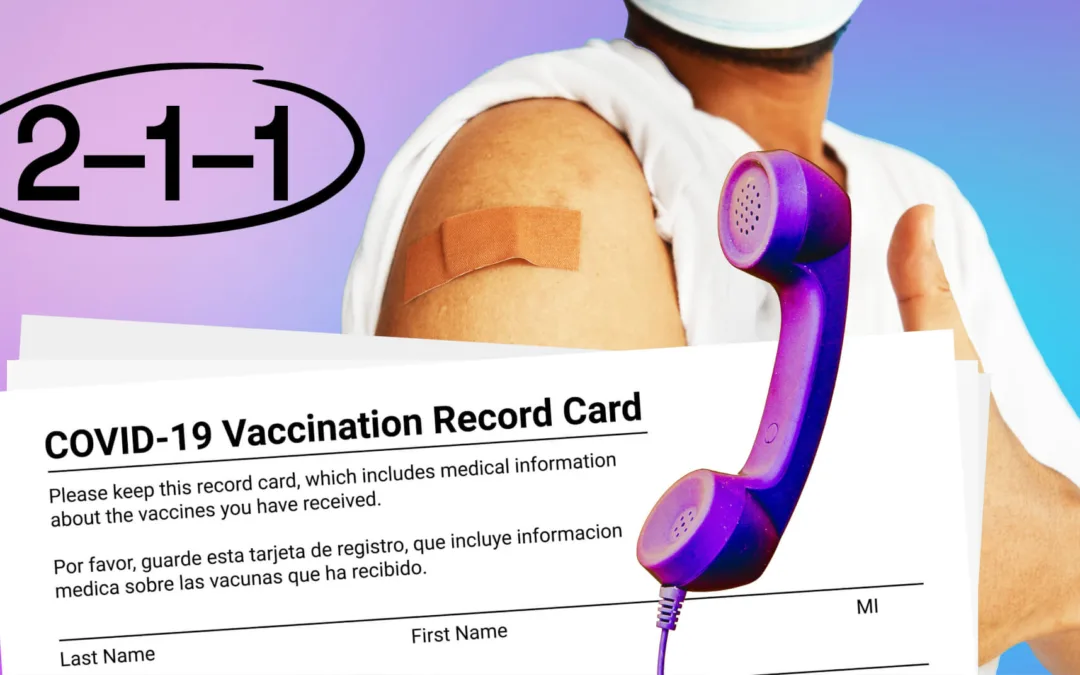
Graphic via Desirée Tapia for Courier
From direct donations to grocery runs, Americans are still leaning on each other in tough times.
In the past week, life in the United States has changed as we know it. The novel coronavirus has spread like wildfire, forcing schools to close their doors, restaurants and bars to shut down, and pushing millions of Americans into economic uncertainty. In recent days, the pandemic has also forced tens of millions of Americans into effective home isolation.
KK Pall is one of these Americans. The 33-year-old personal development coach has followed health officials’ recommendation to practice social distancing. But Pall, who described herself as a relatively healthy individual, also felt like she needed to do more to help those who might struggle to obtain basic necessities while self-isolating in their homes.
“I used to be a caregiver in my free time for a couple of elderly people and I have a real soft spot for people who perhaps are not thought of as often as they should be,” Pall told COURIER.
This soft spot inspired Pall to post on NextDoor, a social networking app for local communities and neighborhoods. In her post, Pall offered to help those “most at risk” in her West Hollywood, California, community with errands or groceries.

“When I found out that this virus affects people who have compromised immune systems and are of a certain age group, it made me thankful that I am healthy and able, so I felt like it was important to reach out to those that might not have the same fortune,” she said.
Pall’s offer could be critical in West Hollywood, a city that has eight confirmed cases of the coronavirus (as of Wednesday morning) and the highest rate of infections in Los Angeles County, the largest county in the United States. Pall has gone on only one grocery run for someone so far, but several other local residents responded and said they would reach out to her if they needed help. Her post also spurred other community members to offer assistance as well.
Pall is just one of thousands of Americans engaging in what’s called “mutual aid.”
While the Trump administration’s response to the pandemic has been slow and largely inadequate—there’s still a shortage of tests, the president downplayed the severity of the virus for over a month, and his administration has repeatedly contradicted itself in its messaging—ordinary people are stepping up to help each other out. Many have launched mutual aid networks that cover everything from direct donations to laid-off workers to efforts focused on individuals with disabilities.
Malcolm Harris, an author and coordinator at the Philadelphia Childcare Collective, is behind one such measure that is focused on childcare. Harris and six partners created the “Covid Childcare Coop Calculator,” a digital tool that allows groups of parents and other caregivers across the world to create an evenly distributed childcare schedule that takes their availability into account and schedules shifts accordingly.
The tool is not a social network and does not store data or introduce strangers to one another. Instead, it’s a way for pre-existing groups of people and networks to form small pods to help each other with childcare in the aftermath of schools being shut down across the country.
“It was a response to what I saw as an emerging childcare crisis around COVID spread when it became clear that schools were going to close and daycare centers were going to close,” Harris said. “Childcare organizing is how I spend a lot of my time, so it was something that I was paying attention to when I was thinking about this and talking to my neighbors about what’s going on for them and what response looks like for them.”
The tool suggests limiting co-ops to seven families or less, in order to restrict the number of people interacting with each other, thus reducing the chance of contracting and transmitting the novel coronavirus. Harris said he and his partners created the tool with the aim of keeping groups “as small as possible.”
The tool doesn’t actually provide childcare, but is intended to suggest a possible path forward for families struggling to find someone to watch their kids while they’re working or otherwise preoccupied. Harris described it as a “harm reduction tool” and “the least bad form of collective childcare during an outbreak.”
“There is a real, absolute need for collective childcare,” Harris said.
He and his partners were driven by the knowledge that addressing the childcare crisis is essential to maintaining the healthcare industry’s capacity and “flattening the curve,” or slowing the spread of the disease in order to prevent hospitals from being overrun and doctors from having to ration care and choose who lives and dies.
While social distancing plays a key role in “flattening the curve,” so does accessible childcare. According to a 2008 study out of the United Kingdom, healthcare and social services workers were nearly twice as likely to be the main caregiver for children under the age of 16, compared to the workforce at large. In total, about 30% of healthcare and social service workers would have to take off work during a pandemic due to childcare responsibilities, far outpacing the 10% who would be absent due to illness.
Put another way, if schools are closing and healthcare workers have children and can’t arrange for care, they may have to call out of work, which would drastically reduce the nation’s healthcare capacity.
“Childcare capacity and healthcare system capacity are really closely tied,” Harris said. “It’s an inverse, you need one to have the other.”
The tool has been a success thus far, according to Harris. “We’ve had many thousands of hits so far, so people seem to be at least checking it out,” he said, adding that a lot of the traffic to the site has actually come from overseas.
“Childcare capacity and healthcare system capacity are really closely tied. It’s an inverse, you need one to have the other.”
While Harris and his partners focus on that need, others like Rebekah Miel are working to provide direct financial relief to individuals and small businesses. Miel, a designer based in Durham, North Carolina, launched online spreadsheets to facilitate purchases of gift cards or products from small businesses in her community as well as donations to individuals.
Miel has previously been involved in several relief and aid efforts in recent years. “Over the last decade I’ve helped raise over a million dollars for things like paying down school lunch debt,” she said.
While those experiences made an impact, Miel said they often took longer than she wanted to distribute funds to those in need—a delay that informed her current approach. Business owners can edit Miel’s spreadsheet and add their own information, including links to purchase gift cards or merchandise, while individuals can list their Venmo accounts and request peer-to-peer donations.
Her efforts have had mixed results so far.
“It’s working better for businesses than it is for individuals,” Miel said. “I think it’s harder for people to self-identify that they need help and have it be on a public list.”
Miel is also working in tandem with a local nonprofit, Day One Disaster Relief, to provide additional mutual aid. Day One started after Hurricane Florence battered North Carolina in 2018 and has traditionally focused on disaster relief. It is now working to address the devastating consequences of the coronavirus pandemic.
“We have a fund set up on GoFundMe and we’re fundraising to assess what the most critical need is each day,” Miel said. “Right now the critical need is figuring out how to get ventilators here locally.”
The group’s GoFundMe has raised more than $8,000 of its $1 million goal so far. Miel is working with Day One’s executive director, Jil Christensen, and hopes they will eventually be able to help workers who’ve lost wages, but the focus is currently on addressing supply chain shortages of ventilators, masks, and medical supplies.
“We’re trying to facilitate that process as quickly as possible so we can be ahead of the bigger outbreak here,” Miel said.
There are currently 63 confirmed cases of the coronavirus in North Carolina, including 12 in Durham County, but the real number is likely much higher given the nationwide testing shortage. The number of cases in the state could reach as many as 4,000 by April 2, according to one epidemiologist’s estimates. That sort of increase could put enormous pressure on hospitals in the Durham area and across North Carolina.
Miel and Day One are trying to stave off such a crisis, as are other organizations across the country. Together, Pall, Harris, and Miel’s efforts represent just a fraction of the mutual aid efforts being carried out across the U.S., underscoring a growing sense of social solidarity even amidst the social distancing and uncertainty.
“Even though we are doing social distancing and it is important to isolate … it is equally important to check in on each other,” Pall said. “I felt like it was important to put something out there to encourage people to be more helpful to each other, to be a community.”
Editor’s Note: This story has been updated to include additional information about Day One Disaster Relief.
Politics

Teamsters and UPS Reach Tentative Deal to Avoid Strike, 340,000 Workers to Get Raises
The tentative deal represents a huge win for full- and part-time UPS Teamster workers, who would get significant pay raises and better working...



One Republican Senator Is Blocking 265 Military Promotions, Leaving the Marines Without a Confirmed Leader
Sen. Tommy Tuberville's decision means these military officers are not getting the pay raises they’re owed, cannot move their families to wherever...
Local News



Teamsters and UPS Reach Tentative Deal to Avoid Strike, 340,000 Workers to Get Raises
The tentative deal represents a huge win for full- and part-time UPS Teamster workers, who would get significant pay raises and better working...



One Republican Senator Is Blocking 265 Military Promotions, Leaving the Marines Without a Confirmed Leader
Sen. Tommy Tuberville's decision means these military officers are not getting the pay raises they’re owed, cannot move their families to wherever...




